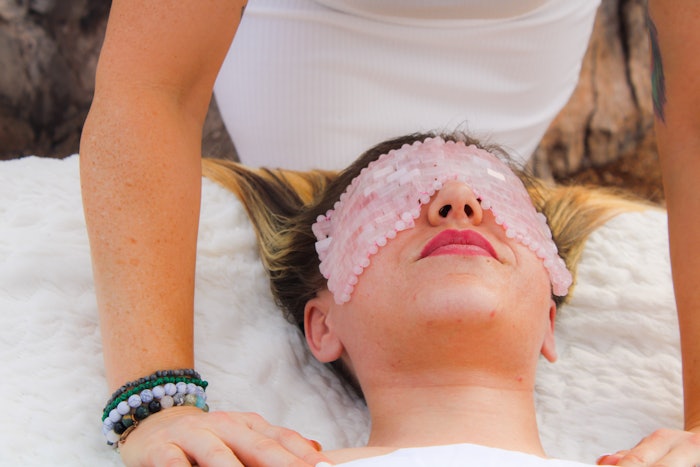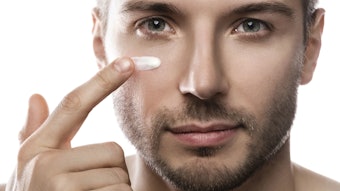
For much of my life, my skin was both my greatest challenge and my greatest teacher. I battled acne, inflammation and sensitivity that went beyond the surface. The shame, stress and self-consciousness I carried only made things worse, locking me in a cycle I couldn’t seem to escape.
Log in to view the full article
For much of my life, my skin was both my greatest challenge and my greatest teacher. I battled acne, inflammation and sensitivity that went beyond the surface. The shame, stress and self-consciousness I carried only made things worse, locking me in a cycle I couldn’t seem to escape.
That experience fueled my passion for uncovering the missing pillar in skin care: emotional health. Today, as an esthetician and an emotional health guide, it’s my mission to bring awareness to the profound connection between our inner world and skin.
Why Skin and Emotional Health Are Connected
Our skin and nervous system share the same embryonic origin, which explains why they are so deeply linked. When stress, trauma or unresolved emotions activate the body’s stress response, the skin is often one of the first places to react.
Cortisol, our primary stress hormone, can break down collagen, weaken the skin barrier and trigger inflammation. Chronic strain is tied to flare-ups of acne, eczema and rosacea, and it can even accelerate premature aging.
This connection is the focus of psychodermatology, an emerging field studying how stress and psychological factors impact skin health. Research confirms what many of us observe: when emotional well-being improves, so does the complexion.
The skin has sensory memory. Neurons in our fingertips store impressions of recent touch, pressure, temperature and texture, which shape how we interpret future sensations. A caress can feel soothing or irritating depending on what the body has previously experienced.
This sensitivity highlights why skin care is never just topical. Every product, treatment and healing modality carries emotional resonance.
Science Confirms the Connection
Studies also show the skin retains experiences at a cellular level. Skin stem cells can have memory of prior inflammation, which can have a negative or positive impact. For example, it can lead to faster healing in the future, but also cause a relapse of a previous condition.
Sun damage is another form of stored experience: years of UV exposure accumulate in cells, leading to pigmentation, wrinkles and higher cancer risk. Senescent, or “zombie,” skin cells release inflammatory proteins that not only accelerate skin aging but may contribute to aging in other organs as well.
Stress and trauma amplify this process. Skin, as our most reactive sensory organ, can flare with hives, itching or premature aging when under emotional strain. Researchers are even exploring how “negative body memories” resurface as skin symptoms linked to PTSD and chronic stress. Even quantum physics reminds us that emotions are energy. When unprocessed, that energy can become stuck, and the skin often reflects it.
In short, both physical and emotional stressors leave lasting imprints that shape skin health for years to come.
How Emotions Manifest on the Skin
Different emotions and common responsive behaviors often leave distinct traces:
- Stress & Anxiety → Breakouts, oil imbalance, barrier disruption
- Grief & Sadness → Dullness, dryness, delayed healing
- Anger & Resentment → Flushing, redness, rosacea
- Fear & Trauma → Premature aging, tension in facial muscles
- Shame & Guilt → Skin picking, hypersensitivity
The skin doesn’t simply mirror the present, it reflects stored experiences and unresolved emotions that continue to shape its condition.
Breaking the Feedback Loop
One of the most frustrating aspects of skin conditions is how they reinforce emotional distress. A breakout or flare-up leads to shame, frustration or anxiety, which then worsens the skin issue. This cycle of stress and inflammation can feel endless.
Breaking the loop begins with reframing how we view the skin. Our skin isn’t betraying us; it’s communicating with us. Instead of treating it as an enemy, we can honor it as a messenger, offering clues about where emotional release and healing are needed.
Healing Skin Through Emotional Health
The encouraging truth is that if emotions can disrupt skin health, they can also support it. Practices that regulate the nervous system and release stored stress create space for renewal. Some options include:
- Reiki and energy healing for those who turn to energy work to feel more balanced
- Somatic practices like movement and breathwork to reduce stress
- Sound healing, crystals and aromatherapy to supplement energy work
- Meditation, journaling and therapy to help process emotions
- Nutrition and hydration to strengthen from within
When combined with professional skin care, these approaches improve not only complexion but also confidence, resilience and overall well-being.
 Combining professional skin care with emotionally-grounding practices can enhance a client's experience while approaching results from a more holistic standpoint.Image courtesy of Elizabeth Mackenzie
Combining professional skin care with emotionally-grounding practices can enhance a client's experience while approaching results from a more holistic standpoint.Image courtesy of Elizabeth Mackenzie
A Mission to Elevate Skin and Soul
Our skin reflects both biology and emotion. By honoring its connection to the mind and body, we can break free from cycles of stress and inflammation and invite true healing.
This is the work I am dedicated to, bridging aesthetics with emotional health so clients and professionals alike can experience transformation from the inside out.
When energy flows freely, the skin doesn’t just heal, it glows.










